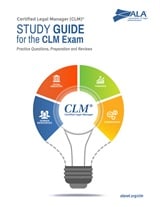Exam Content
The examination will include 125 questions, 25 of which will be included on a pilot basis and will not contribute toward the examinee’s test score. Pilot items are distributed among all categories and are unidentifiable from other questions. Responses to pilot items are analyzed to determine if they qualify and are suitable for use in future exams.
Sample Exam Questions and Answers: The following test items are representative examples of the types of test items that will appear on the examination. Actual items may vary in content and difficulty level.
1. An asset placed in service today would be most commonly depreciated for U.S. federal tax reporting purposes using which of the following methods?
(a) Alternative Minimum Tax
(b) Accelerated Cost Recovery System
(c) Double Declining Balance
(d) Modified Accelerated Cost Recovery System
2. According to the American with Disabilities Act (ADA), when are medical examinations for potential new hires allowed?
(a) Once a job has been offered but prior to the commencement of employment
(b) Within 30 days of commencement of employment
(c) Prior to a position being offered
(d) When the employer doubts the applicant’s ability to perform
3. The term “selection procedure” as used by the Equal Employment Opportunity Commission (EEOC) includes:
(a) Standardized tests only
(b) Interviews only
(c) Physical examinations only
(d) Any procedure used as a basis for selection decisions
4. What characterizes an effective progressive discipline procedure?
(a) It includes feedback which is provided after several offenses
(b) It is intended to improve performance
(c) It is a systematic process intended to lead to demotion or termination
(d) It provides for informal counseling sessions
5. One of your attorneys has been asked to become a member of a client’s board of directors. What should be your main concern?
(a) The attorney may not be skilled to advise the board of directors in the complete scope of legal issues that may arise during board meetings
(b) The attorney may be inclined to accept work projects either outside of the scope of the firm’s resources and/or with unrealistic deadlines just to satisfy specific members of the board
(c) The attorney’s actions as a director may not be covered by your firm’s professional liability insurance policy
(d) The attorney’s time may be redirection away from the practice of law to the interests of the corporation for which he or she is a director
6. “Claims made” professional liability insurance policies typically include a provision for “prior acts” coverage. This coverage reaches back in time to a period prior to the policy period. A condition precedent to this coverage is that the insured individual:
(a) Purchased an extended reporting option at the conclusion of the prior policy period
(b) Notified the carrier during the policy year in which the act, error or omission occurred of the possibility that something had happened that could give rise to a future claim
(c) Diligently pursued a path to mitigate damages from some act, error or omission which was reported to the carrier in a subsequent period because of an unanticipated event
(d) Did not know or could not have reasonably known that a particular act would result in a claim
7. What is the function of Application Service Providers (ASPs)?
(a) To provide in-house help desk services to organizations
(b) To host software applications and store data accessible over the internet
(c) To link voice and data systems using fiber optics
(d) To provide analysis of optimal software applications to maximize workflow
8. In the strategic planning process, what addresses (a) what is involved, (b) when it begins and ends, (c) who will do it, (d) how much it will cost, and (e) the expected outcomes?
(a) Vision statement
(b) Goals statement
(c) Statement of objectives
(d) Action plan
9. According to ABA guidelines, when may a lawyer destroy client files?
(a) One year after the conclusion of the matter
(b) After the lawyers has attempted to return the file to the client and after ensuring that no legal or ethical restrictions prevent their destruction
(c) If the lawyer, in his or her professional opinion, concludes that the matter is completed, and the client has no further need of the file contents
(d) Once the lawyers have determined that the client cannot or will not pay outstanding fees
10. If a firm terminated its 10-year lease in the middle of the seventh year, what would be the effect on the firm’s year-end financial statement if the firm had made a $500,000 outlay for tenant leasehold improvements?
(a) The firm’s current assets would be reduced.
(b) The firm’s depreciation/amortization for the year would increase.
(c) The firm’s total operating expense for the year would decrease.
(d) Although the firm’s income statement would be affected, the year-end balance sheet would not change as a result of this transaction.
Correct answers: 1. d, 2. a, 3. d, 4. b, 5. c, 6. d, 7. b, 8. d, 9. b, 10. b
